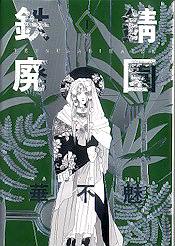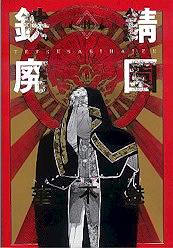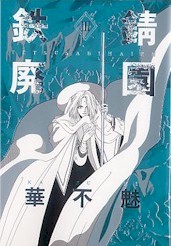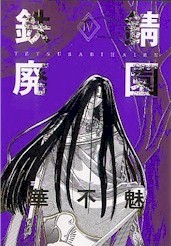|
Certain Japanese comics are not only for entertainment. First of all,
why do you think that so called the comic generation in 80's existed in
Japan? Why Japanese youngsters were so enthusiastic about comics in
those days?
That's because Japanese comics are/were Pop Art like British Pop/Rock
music in 70's to 80's were Pop Art. I mean, as you know, fine Pop/Rock
artists in U.K. have their own thoughts. So Japanese fine comic artists
are/were the same. On the contrary, very interesting that most of the
Japanese self-claimed (modern polite) literature have no or just
low level philosophical background. At most Mishima who died in the
strange way.
But Japanese fine comic books sometimes contain very profound
philosophical thoughts. Take Jun Mihara for instance, who died years ago
but her influence is still alive.
Don't take "Nana" or "Hana yori dango" type
of comics from 90's. Those are only for entertainment. Typical mere
comics for children or people who don't think anything, not Pop Art.
However in 80's, Jun Mihara brought philosophical thoughts into her
story. Not only her but also a lot of splendid comic artists have their
own views and brought them into their pieces. So those were already not
for children, but for intelligent and idealistic youngsters.
Well, after that, since 90's, the Japanese comic world has been in the
mess. Almost no more new Mihara or philosophical backgrounds any more.
Alas! Most of them are for thoughtless children. Still, thank god, as I
said "(people like) Mihara's influence is still alive", some comic
artists are "artists". So I still love comics.
 Today I'd like to introduce one of them.
Today I'd like to introduce one of them.
The title is "Tetsusabi Haien", literally means "Iron Rust
Waste Garden" but I think "The Rusted Paradise" is better from the
story. This is by Kazumi who made her debut to the Japanese comic world
in 1989, but stopped her career because of her bad mental / physical
conditions. So "Tetsusabi Haien" had been unfinished until
2009. The beginning part of the story was published in 1991 first, so
the blank is almost 20 years. After so many years, she came back and
completed the story in 2009.
Times are changing fast, but good stories contain eternity. The fact
that many fans awaited its comeout tells how the story goes. Moreover
the new complete version of books are published with luxurious binding.
Though not hard cover, the papers are fine for comic books and the cover
is printed with shiny colours of gold and silver. Those are a bit
expensive but, think of the years, worth it.
The story is a fantasy with the artist's own views of the world. Once
there was "the Magna Disaster", when a devilish magician
named Isa Mel (sorry, the spell is vague) opened the route from the
monsters' dimension to the world, so thousands of monsters rushed in.
The result was disastrous. Angels, magicians, and fighters died during
the long fierce fight to close the route, but at last Isa Mel was locked
into a stone and the route was closed. But many survived monsters are
still alive and wanting this fertile world. So after 600 years of woe,
they plundered the stone which Isa Mel was locked in and made him come
back to life. So again the war has begun.
In the mean time, there is an eminent magician called Gelsomina. But his
real name is Sodai whom revived Isa Mel desperately wants to get back.
It seems that there was some discord between Isa Mel and Sodai more than
600 years ago and the secret, as well as the reason why Isa Mel wanted /
still wants to destroy the whole world, is hidden in the ancient history.
Alongside of this main stream, there goes some side stories at the same
time all in one. Like who loves who or who wants what. Through those, if
you have an eye for art, you can see how the artist sees the world and
what kind of thoughts she has.
In addition to the story which is mainly serious but sometimes funny,
the pictures are very splendid and full of originality. Not only Isa Mel
and Sodai, but other boys and girls in the story are mostly beautiful,
which one of the fascinating factors of "girls' comics". (Kazumi
persists in claiming her pieces are "girls' comics". I think it
reasonable because "girls' comics" in 80's were the origin of the comic
generation which Kazumi herself was influenced. Different from boys' or
ladies' comics, only "girls' comics" can/could exist as art pieces
because of its highly refined sensitivity. At least in 80's, if I may
say so.)



By the way, there's another unfinished story by Kazumi titled "Glamorous
Gossip". This is rather a space fiction type of story than a fantasy. I
encountered "GG" in 90's and that was the first time when I read her
comic. "Tetsusabi Haien" is a good one but even more than
that I like "GG". Like "Tetsusabi", "Glamorous
Gossip" is now resumed to complete and you can read the latest
continuation at "Web
Magazine Wings" for free. If you're good at Japanese, try it or the
book "Tetsusabi Haien". So you can see why I said that
"certain Japanese comics are not only for entertainment".
Categories:
books/comics
|